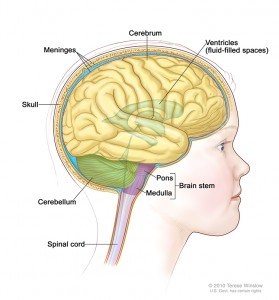About DIPG/DMG
|
Diffuse intrinsic pontine glioma (DIPG) is a type of brain tumor found in the pons, which is part of the brainstem. DIPG primarily affects children, with most diagnoses occurring between 5 and 7 years of age. DIPG makes up 10-15% of all brain tumors in children, with about 100-300 new diagnoses per year in the United States and a similar number in Europe. Unlike many other pediatric cancers, there has been little progress in improving treatments and cure rates for DIPG over the last few decades. Unfortunately, fewer than 10% of children with DIPG survive two years from diagnosis. The name diffuse intrinsic pontine glioma describes how the tumor grows, where it is found, and what kinds of cells give rise to the tumor. |
 |
Diffuse means that the tumor is not well-contained: it grows out into other tissue so that cancer cells mix with healthy cells. For this reason, it is impossible to surgically remove DIPG tumors without damaging healthy tissue. This makes DIPG very hard to treat.
Pontine describes where the tumor is located. It is found in a part of the brainstem called the pons.The pons is responsible for a number of important bodily functions, like breathing, sleeping, bladder control, and balance. Because these functions are vital to survival, the pressure from the growing tumor is very dangerous.
Glioma is a general term for tumors originating from glial cells. Glial cells are found throughout the brain. They make up the white matter of the brain that surrounds and supports the neurons (neurons are cells that carry messages in the brain). Gliomas can form in different areas of the brain. DIPG occurs in glial cells in the pons.
